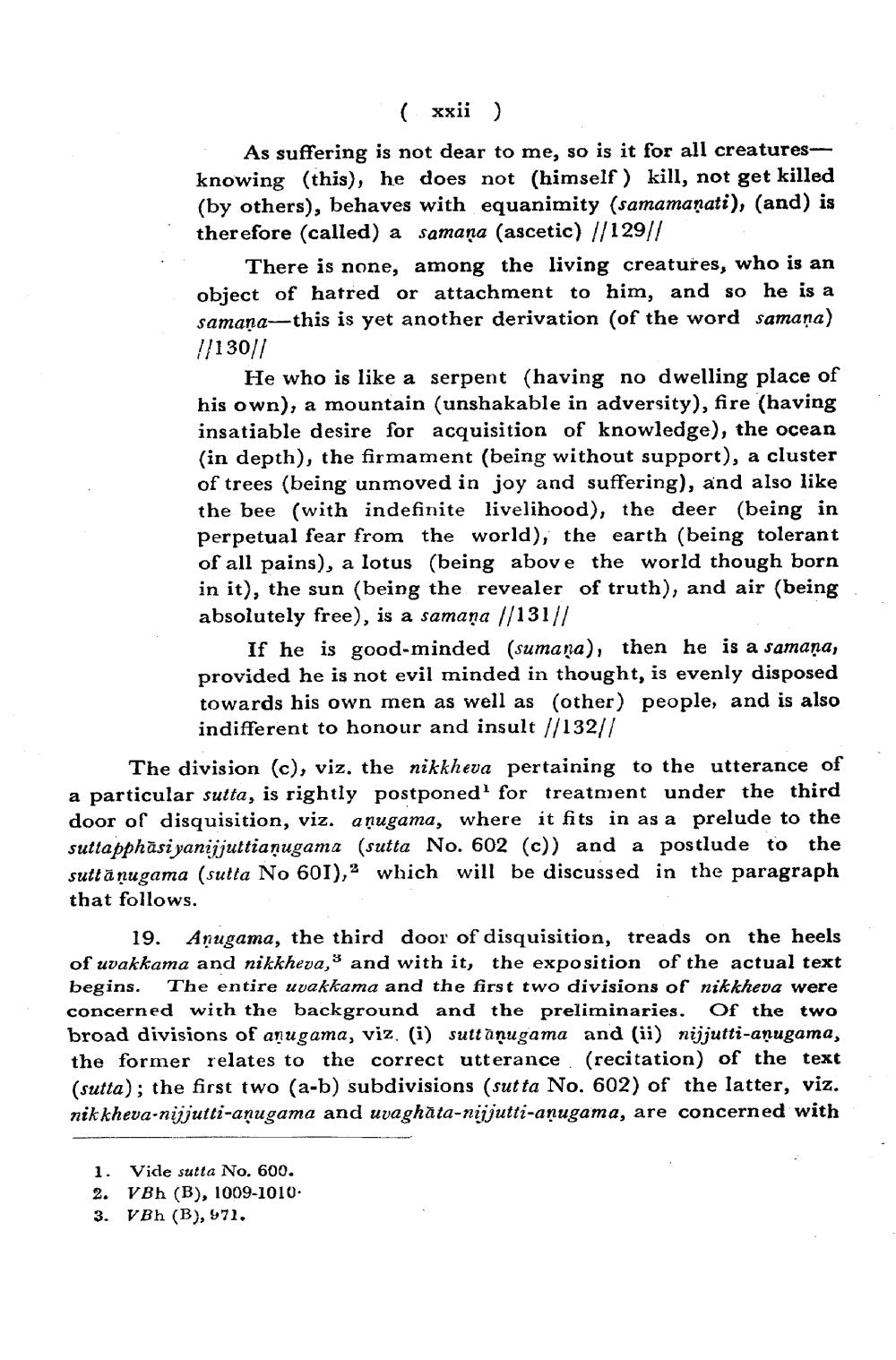________________
( xxii) As suffering is not dear to me, so is it for all creaturesknowing (this), he does not (himself) kill, not get killed (by others), behaves with equanimity (samamanati), (and) is therefore (called) a samaņa (ascetic) //129//
There is none, among the living creatures, who is an obiect of hatred or attachment to him, and so he is a samana--this is yet another derivation (of the word samana) !/130/1
He who is like a serpent (having no dwelling place of his own), a mountain (unshakable in adversity), fire (having insatiable desire for acquisition of knowledge), the ocean (in depth), the firmament (being without support), a cluster of trees (being unmoved in joy and suffering), and also like the bee (with indefinite livelihood), the deer (being in perpetual fear from the world), the earth (being tolerant of all pains), a lotus (being above the world though born in it), the sun (being the revealer of truth), and air (being absolutely free), is a samana //131/
If he is good-minded (sumana), then he is a samana, provided he is not evil minded in thought, is evenly disposed towards his own men as well as (other) people, and is also indifferent to honour and insult //132//
The division (c), viz, the nikkheva pertaining to the utterance of a particular sutta, is rightly postponed for treatment under the third door of disquisition, viz. anugama, where it fits in as a prelude to the sutta pphäsi yanijjuttianugama (sutta No. 602 (c)) and a postlude to the suttă nugama (sutta No 601), 2 which will be discussed in the paragraph that follows.
19. Anugama, the third door of disquisition, treads on the heels of uvakkama and nikkheva,and with it, the exposition of the actual text begins. The entire uvakkama and the first two divisions of nikkheva were concerned with the background and the preliminaries. Of the two broad divisions of anugama, viz. (i) sutt anugama and (ii) nijjutti-anugama, the former relates to the correct utterance (recitation) of the text (sutta); the first two (a-b) subdivisions (sutta No. 602) of the latter, viz. nik kheva-nijjutti-anugama and uvaghăta-nijjutti-aņugama, are concerned with
1. Vide sutta No. 600. 2. VBh (B), 1009-10103. VBh (B), 971.




